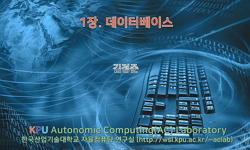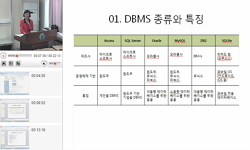Semi-supervised clustering relies on both labeled and unlabeled data to steer the clustering process towards optimal categorization and escape from local minima. In this paper, we propose a novel fuzzy relational semi-supervised clustering algorithm b...
http://chineseinput.net/에서 pinyin(병음)방식으로 중국어를 변환할 수 있습니다.
변환된 중국어를 복사하여 사용하시면 됩니다.
- 中文 을 입력하시려면 zhongwen을 입력하시고 space를누르시면됩니다.
- 北京 을 입력하시려면 beijing을 입력하시고 space를 누르시면 됩니다.


Automatic Determination of the Number of Clusters for Semi-Supervised Relational Fuzzy Clustering
한글로보기https://www.riss.kr/link?id=A106915257
-
저자
Norah Ibrahim Fantoukh (King Saud University) ; Mohamed Maher Ben Ismail (King Saud University) ; Ouiem Bchir (King Saud University)

- 발행기관
- 학술지명
- 권호사항
-
발행연도
2020
-
작성언어
English
- 주제어
-
등재정보
KCI등재,SCOPUS,ESCI
-
자료형태
학술저널
- 발행기관 URL
-
수록면
156-167(12쪽)
-
KCI 피인용횟수
0
- 제공처
- 소장기관
-
0
상세조회 -
0
다운로드
부가정보
다국어 초록 (Multilingual Abstract)
Semi-supervised clustering relies on both labeled and unlabeled data to steer the clustering process towards optimal categorization and escape from local minima. In this paper, we propose a novel fuzzy relational semi-supervised clustering algorithm based on an adaptive local distance measure (SSRF-CA). The proposed clustering algorithm utilizes side-information and formulates it as a set of constraints to supervise the learning task. These constraints are expressed using reward and penalty terms, which are integrated into a novel objective function. In particular, we formulate the clustering task as an optimization problem through the minimization of the proposed objective function. Solving this optimization problem provides the optimal values of different objective function parameters and yields the proposed semi-supervised clustering algorithm. Along with its ability to perform data clustering and learn the underlying dissimilarity measure between the data instances, our algorithm determines the optimal number of clusters in an unsupervised manner. Moreover, the proposed SSRF-CA is designed to handle relational data. This makes it appropriate for applications where only pairwise similarity (or dissimilarity) information between data instances is available. In this paper, we proved the ability of the proposed algorithm to learn the appropriate local distance measures and the optimal number of clusters while partitioning the data using various synthetic and real-world benchmark datasets that contain varying numbers of clusters with diverse shapes. The experimental results revealed that the proposed SSRF-CA accomplished the best performance among other state-of-the-art algorithms and confirmed the outperformance of our clustering approach.
목차 (Table of Contents)
- Abstract
- 1. Introduction
- 2. Related Works
- 3. Proposed Approach
- 4. Experimental Results
- Abstract
- 1. Introduction
- 2. Related Works
- 3. Proposed Approach
- 4. Experimental Results
- 5. Conclusions
- References
참고문헌 (Reference)
1 N. Grira, "Unsupervised and semi-supervised clustering: a brief survey"
2 E. Frias-Martinez, "Survey of data mining approaches to user modeling for adaptive hypermedia" 36 (36): 734-749, 2006
3 R. Greenlaw, "Survey of clustering : algorithms and applications" 3 (3): 1-29, 2013
4 O. Bchir, "Semisupervised relational fuzzy clustering with local distance measure learning" 1-4, 2013
5 X. Yin, "Semi-supervised clustering with metric learning : an adaptive kernel method" 43 (43): 1320-1333, 2010
6 R. J. Hathaway, "Relational duals of the c-means clustering algorithms" 22 (22): 205-212, 1989
7 D. M. Duc, "Lagrange multipliers theorem and saddle point optimality criteria in mathematical programming" 323 (323): 441-455, 2006
8 M. Bilenko, "Integrating constraints and metric learning in semi-supervised clustering" 2004
9 O. Bchir, "Fuzzy clustering with Learnable Cluster dependent Kernels" 2521-2527, 2011
10 G. Raju, "Fuzzy clustering methods in data mining: a comparative case analysis" 489-493, 2008
1 N. Grira, "Unsupervised and semi-supervised clustering: a brief survey"
2 E. Frias-Martinez, "Survey of data mining approaches to user modeling for adaptive hypermedia" 36 (36): 734-749, 2006
3 R. Greenlaw, "Survey of clustering : algorithms and applications" 3 (3): 1-29, 2013
4 O. Bchir, "Semisupervised relational fuzzy clustering with local distance measure learning" 1-4, 2013
5 X. Yin, "Semi-supervised clustering with metric learning : an adaptive kernel method" 43 (43): 1320-1333, 2010
6 R. J. Hathaway, "Relational duals of the c-means clustering algorithms" 22 (22): 205-212, 1989
7 D. M. Duc, "Lagrange multipliers theorem and saddle point optimality criteria in mathematical programming" 323 (323): 441-455, 2006
8 M. Bilenko, "Integrating constraints and metric learning in semi-supervised clustering" 2004
9 O. Bchir, "Fuzzy clustering with Learnable Cluster dependent Kernels" 2521-2527, 2011
10 G. Raju, "Fuzzy clustering methods in data mining: a comparative case analysis" 489-493, 2008
11 C. Borgelt, "Finding the number of fuzzy clusters by resampling" 48-54, 2006
12 J. M. Yih, "FCM & FPCM algorithm based on unsupervised Mahalanobis distances with better initial values and separable criterion" 3 (3): 9-18, 2009
13 O. Nasraoui, "Extracting web user profiles using relational competitive fuzzy clustering" 9 (9): 509-526, 2000
14 H. Frigui, "Clustering by competitive agglomeration" 30 (30): 1109-1119, 1997
15 A. Skabar, "Clustering Sentence-level text using a novel fuzzy relational clustering algorithm" 25 (25): 62-75, 2013
16 S. Saha, "Brain image segmentation using semi-supervised clustering" 52 : 50-63, 2016
17 O. Arbelaitz, "An extensive comparative study of cluster validity indices" 46 (46): 243-256, 2013
18 Z. Yu, "Adaptive ensembling of semisupervised clustering solutions" 29 (29): 1577-1590, 2017
19 S. Xiong, "Active Learning of Constraints for Semi-Supervised Clustering" 26 (26): 43-54, 2014
20 S. Wazarkar, "A survey on image data analysis through clustering techniques for real world applications" 55 : 596-626, 2018
21 S. Zeng, "A study on semi-supervised FCM algorithm" 35 (35): 585-612, 2013
22 C. F. Gao, "A new semi-supervised clustering algorithm with pairwise constraints by competitive agglomeration" 11 (11): 5281-5291, 2011
23 D. Xu, "A comprehensive survey of clustering algorithms" 2 (2): 165-193, 2015
동일학술지(권/호) 다른 논문
-
An Improved Bushell-Okarasinski Type Inequality for Sugeno Integrals
- 한국지능시스템학회
- Dug Hun Hong
- 2020
- KCI등재,SCOPUS,ESCI
-
New Approach to Intuitionistic Fuzzy Rough Sets
- 한국지능시스템학회
- Sang Min Yun
- 2020
- KCI등재,SCOPUS,ESCI
-
Prediction Method of Periodic Limb Movements Based on Deep Learning Using ECG Signal
- 한국지능시스템학회
- Urtnasan Erdenebayar
- 2020
- KCI등재,SCOPUS,ESCI
-
Lazy Learning for Nonparametric Locally Weighted Regression
- 한국지능시스템학회
- Seok-Beom Roh
- 2020
- KCI등재,SCOPUS,ESCI
분석정보
인용정보 인용지수 설명보기
학술지 이력
| 연월일 | 이력구분 | 이력상세 | 등재구분 |
|---|---|---|---|
| 2023 | 평가예정 | 해외DB학술지평가 신청대상 (해외등재 학술지 평가) | |
| 2020-01-01 | 평가 | 등재학술지 유지 (해외등재 학술지 평가) |  |
| 2013-01-01 | 평가 | 등재 1차 FAIL (등재유지) |  |
| 2010-01-01 | 평가 | 등재학술지 유지 (등재유지) |  |
| 2008-02-18 | 학회명변경 | 한글명 : 한국퍼지및지능시스템학회 -> 한국지능시스템학회영문명 : Korea Fuzzy Logic And Intelligent Systems Society -> Korean Institute of Intelligent Systems |  |
| 2007-01-01 | 평가 | 등재학술지 선정 (등재후보2차) |  |
| 2006-01-01 | 평가 | 등재후보 1차 PASS (등재후보1차) |  |
| 2004-07-01 | 평가 | 등재후보학술지 선정 (신규평가) |  |
학술지 인용정보
| 기준연도 | WOS-KCI 통합IF(2년) | KCIF(2년) | KCIF(3년) |
|---|---|---|---|
| 2016 | 0.43 | 0.43 | 0.4 |
| KCIF(4년) | KCIF(5년) | 중심성지수(3년) | 즉시성지수 |
| 0.35 | 0.35 | 0.853 | 0.05 |




 DBpia
DBpia





